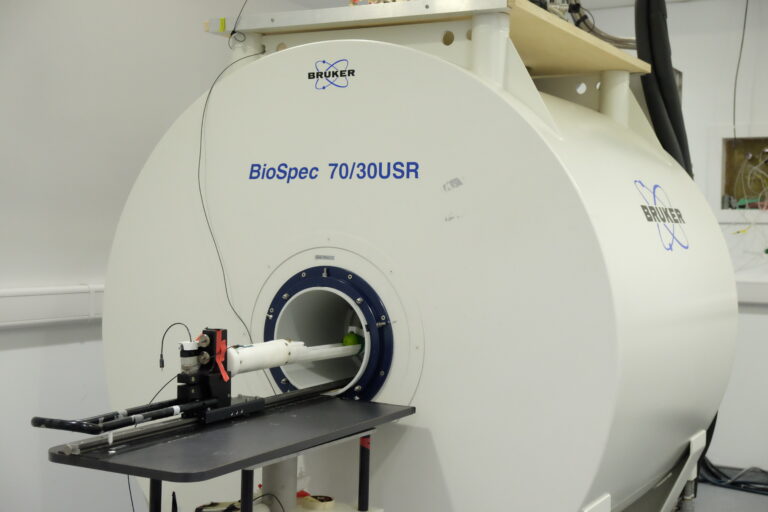FELLOWSHIP: SECRET AND TOPSREF - rheology under kinematically mixed flows
Background and ToPSREF

Rheology is the study of how a fluid responds to an imposed stress or deformation. Rheology is conventionally studied under either a pure shearing (“sliding”) flow or a pure extensional (“stretching”) flow, providing information on shear and extensional viscosity as a function of strain rate, respectively. However, real world flows are “kinematicially mixed” – i.e. they contain shear and extensional deformation simultaneously. The micro-structure of a fluid (polymer chains, particles of some particular shape, etc) ultimately determine a fluid’s rheological response to flow, and this is of course simultaneously coupled to both shear and extensional deformation. A “stretching” flow (one where fluid velocity accelerates) may align polymer chains or rod-like particles in the direction of flow. Thus, it is easy to imagine that the flow resistance from a parallel bounding wall (i.e. a channel through which the fluid is flowing) might be reduced as a result, i.e. the shear viscosity is reduced relative to that without extension present. When the fluid conversely slows down and the material is aligned across the direction of flow, the shear viscosity might conceivably increase. However, this fall and rise in shear viscosity respectively may not always be the case.
The simplest example of an important flow where mixed kinematics exist is any location between the centerline and wall where fluid is forced to flow through an axisymmetric narrowing. This narrowing may be as simple as a hole in the bottom of a tank, through to the nozzle on a plastic extruder which forms long plastic products and dictates their final shape. 3D printing of plastics, and more recently e.g. cements, are more advanced examples of such flows – with more sensitivity to the final structure developed in the material, too. A more serious example is the contorted, elaborate flows present in an injection mould which contain varying amounts of shear and extension – these are complex, expensive items used to create the vast majority of plastic parts used in commercial, industrial, and domestic applications.
We need to be able to accurately predict the flow of complex materials under these kinematically mixed conditions. In particular, injection moulds may cost many tens of thousands of pounds to have fabricated, and if plastic flow to some part extremity is slower than predicted, the entire production cycle time and thus profitability would be seriously impacted. This is all the more important when composite materials are to be processed, such as carbon or graphene filled for performance or bio-filled materials for sustainability.
To date, the only way of verifying the behaviour of fluid models – models used to predict how a material flows in such applications – is to compare “full field” parameters such velocity or birefringent stresses between predictions and experiments. However, these do not provide direct evidence as to whether extensional or shear stresses are affecting how the fluid flow is behaving, and thus provide few clues about why existing models might not be matching experiments if a discrepancy is seen.
To address the initial question of “if” extensional flows affect shear viscosity, Richard developed the “ToPSREF” (Two Phase Shear Rheology (under) Extensional Flow) technique during his PhD. A publication describing the technique is available below, and the photo above shows the flow cell used, under two-phase flow conditions, with the laser used for PIV (particle image velocimetry) visible.
Fellowship project: S.E.C.R.E.T.

Richard’s EPSRC funded “NFFDy” (National Fellowship in Fluid Dynamics) fellowship project takes the ToPSREF technique further. Since the original attempt used an optical approach to measure fluid velocity, it was limited to both optically transparent test fluids, and in particular ones which could be refractive-index matched to the reference oil used. This severely limits the range of systems than can be probed, in particular (essentially) preventing the study of suspensions.
His S.E.C.R.E.T. (Shear Extension Combined Rheology Experimental Techniques) fellowship in the Department of Materials Science and Engineering at The University of Sheffield aims to overcome this limitation through the use of magnetic resonance imaging (MRI), of which magnetic resonance velocimetry (MRV) has the ability to image the flow of opaque fluids. The scanner to be used is shown above, a high resolution, 7 Tesla “pre-clinical” scanner, located in the MR-Microscopy and Preclinical MRI Research Facility of the School of Medicine. A apple is currently visible in the scanner, this photo will be replaced with one of the complex flow system required for these experiments when developed and built.
A range of project partners are in the project: see the Collaboration Team for details. This project aims to test a wide variety of materials, from polymer solutions to suspensions, and will provide the evidence necessary to test existing and develop new fluid models.

